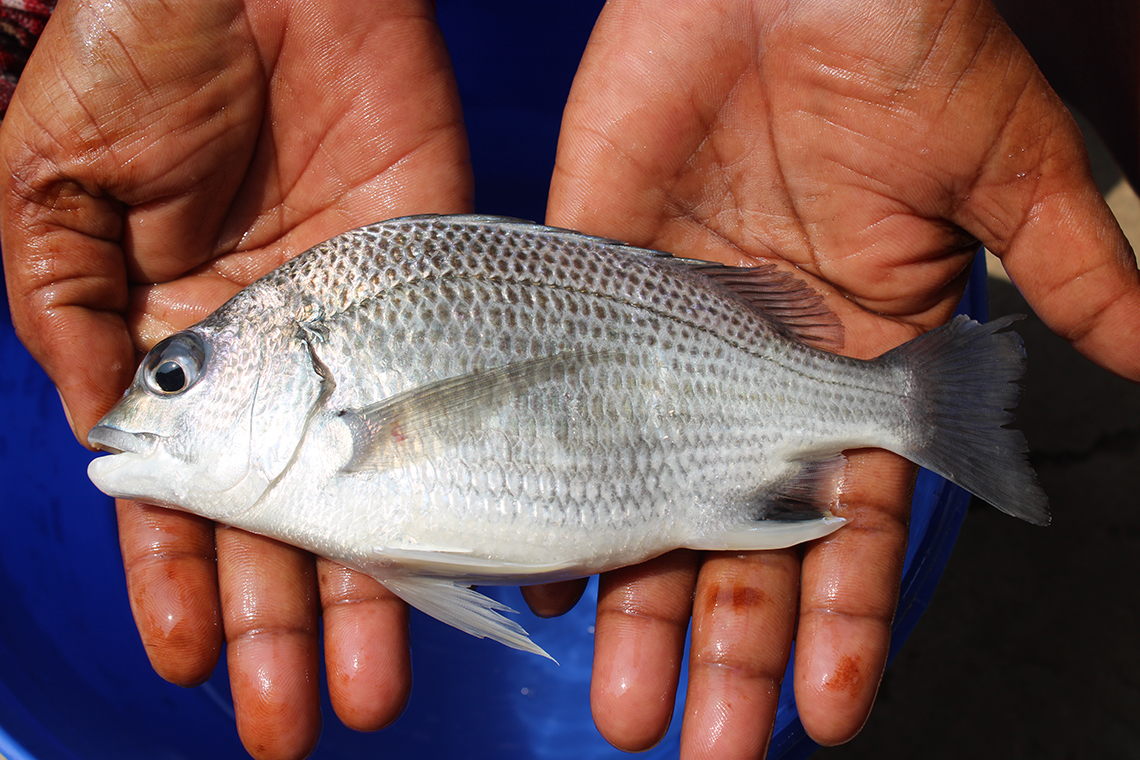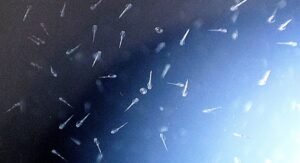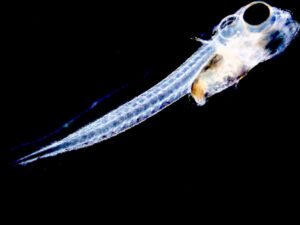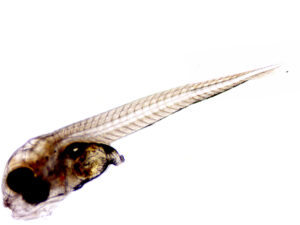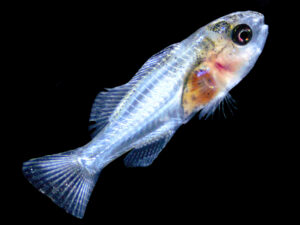Bengal yellowfin seabream (Acanthopagrus datnia) belongs to the sparidae family, majorly distributed in the Bay of Bengal region and has high demand and market price (₹ 300 to 400/ kg) due to its white tender meat. Quality seed availability hindered the aquaculture expansion and till now it is only grown traditionally in Bheries of West Bengal. Hence, broodstock development and trials on induced spawning were initiated in the Recirculation Aquaculture System (RAS) facility at Kakdwip Research Centre of ICAR-CIBA. Brood fish with body weight ranging from 100 – 630 g were maintained in the RAS. Milt expression in males and mature oocytes in females were observed in the last week of November, 2023. Mature females having oocyte diameter >450 µm were selected for pairing with the sex ratio of 1 female : 3 males in the spawning tank. Dose of hCG (2000 IU/kg body weight for female and 1000 IU/kg body weight for males) was standardized to induce successful spawning by a breeding pair. Ovulation was observed within 18 – 24 hours at 18 – 20 ºC in 26 – 27 ppt salinity. Fertilized eggs (diameter: 870 – 890 µm) are translucent and pelagic in nature. Hatching can be completed within 18 hours at water temperature 18 – 20 ºC. A female (body weight: 250 – 300 g) could spawn in 3-5 batches with a total 1.0 – 2.0 lakh eggs post hCG administration. Fertilization and hatching percentage ranged between 90 – 95 %. Newly born hatchlings were in the range of 1.92-1.98 mm in length. Mouth opening was observed at 50 hours post hatching at 20 ºC. Exogenous feeding was initiated on 3 days post hatching (dph) with rotifer (Brachionus plicatilis) which continued till 15 dph. Artemia nauplii were offered from 15 dph – 35 dph. Weaning on microparticulate formulated feed started on 30 dph. Outdoor nursery rearing of 30000 nos larvae in tanks and brackishwater ponds is in progress.
Globally this is the first report on captive spawning and larval production of Bengal yellowfin seabream (A. datnia). This achievement marks a significant milestone for hatchery-based seed production of Bengal yellowfin seabream in India leading to new opportunities for aquaculture in the near future through species diversification in the country.
Fertilized eggs of Bengal bream
12 dph larvae
18 dph larvae
30 dph larvae
Bengal yellowfin seabream juveniles produced in KRC hatchery facilities
